ANIMALS
27 Animals That Live In The Most Extreme Conditions
Published
4 months agoon
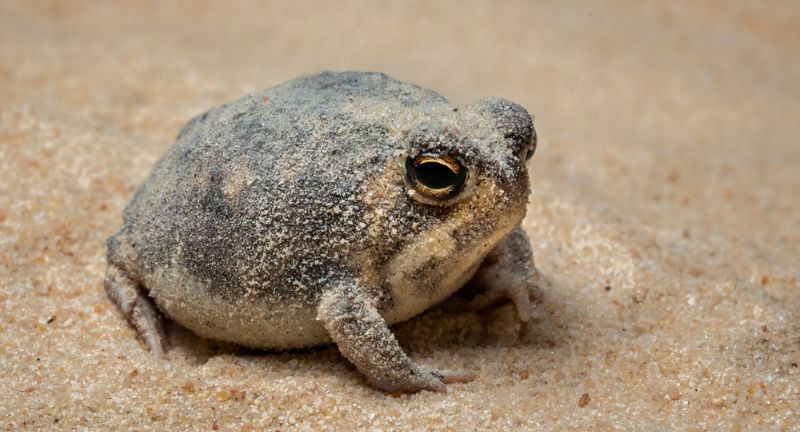
Shutterstock
The natural world is full of incredible creatures that have adapted to live in some of the harshest environments on Earth. From the icy waters of Antarctica to the scorching deserts of the Sahara, these animals have developed unique traits that allow them to survive where most others would perish. Whether enduring extreme temperatures, high altitudes, or oxygen-poor environments, these resilient species showcase the diversity and adaptability of life on our planet. Their remarkable survival strategies provide insight into the power of evolution and the astonishing ability of life to persist in the most extreme conditions. Explore 27 amazing animals that live in environments most would consider uninhabitable.
Tardigrades (Water Bears)

Shutterstock
Tardigrades, also known as water bears, are microscopic creatures that can survive some of the harshest conditions known to science. They can endure extreme temperatures, from the freezing cold of Antarctica to boiling water. Tardigrades have also survived the vacuum of space, showing resilience against radiation and high pressures. Their unique ability to enter a state of cryptobiosis allows them to endure these conditions for long periods.
Antarctic Icefish

Shutterstock
The Antarctic Icefish is a remarkable creature that thrives in the icy waters of the Southern Ocean. These fish have antifreeze proteins in their blood, which prevent their bodily fluids from freezing in temperatures that would kill most other fish. They live in an environment where temperatures hover around -2°C, making it one of the coldest habitats on Earth. The icefish’s ability to survive and even thrive in these frigid conditions is a testament to evolutionary adaptation.
Emperor Penguin

Shutterstock
Emperor Penguins are iconic residents of Antarctica, known for enduring the harshest winter conditions on the planet. During the winter months, they face temperatures as low as -60°C and wind speeds reaching up to 200 km/h. Despite these extreme conditions, Emperor Penguins huddle together in large groups to conserve heat, while males incubate eggs for months without eating. Their remarkable endurance and social behavior are key to their survival in this extreme environment.
Sahara Silver Ant

Shutterstock
The Sahara Silver Ant holds the record for surviving in some of the highest temperatures on Earth. These ants can withstand the scorching heat of the Saharan desert, where temperatures can reach up to 70°C. They have adapted by limiting their time outside their nests, sprinting in short bursts to avoid overheating. Their reflective silver hairs help deflect the sun’s rays, providing additional protection from the intense desert heat.
Camel

Shutterstock
Camels are perfectly adapted to life in some of the hottest and driest environments on Earth, such as deserts. They can go for long periods without water, using fat stored in their humps to survive when food is scarce. Their ability to withstand extreme heat without sweating profusely helps them conserve water. Camels also have specialized adaptations, such as thick eyelashes and nostrils that close, to protect themselves from blowing sand.
Arctic Fox
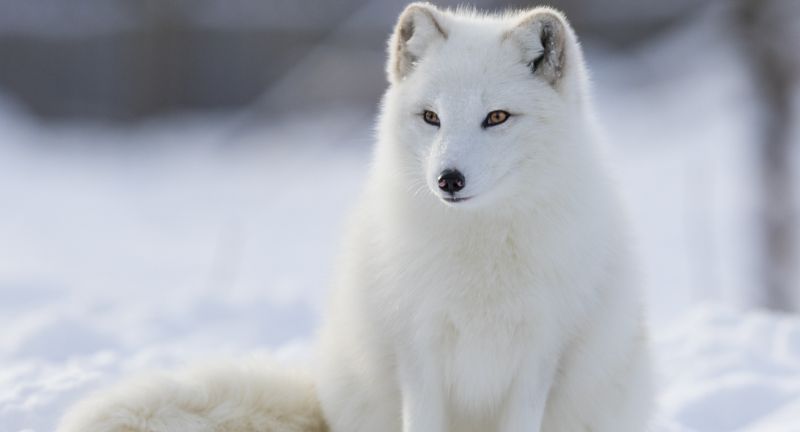
Shutterstock
Shutterstock
The Arctic Fox is a small but resilient predator that lives in some of the coldest regions on Earth, including the Arctic tundra. Its thick fur provides insulation, allowing it to withstand temperatures as low as -50°C. During the winter, the Arctic Fox’s coat turns white to blend in with the snow, offering both warmth and camouflage. It also has a highly efficient metabolism, helping it survive when food is scarce in such frigid environments.
Yak

Shutterstock
Yaks are large, shaggy mammals that live in the high-altitude regions of the Himalayas. They are well adapted to the cold and oxygen-poor environments found at altitudes of 3,000 to 5,000 meters. With their thick woolly coats and robust physiology, yaks are able to survive temperatures that drop to -40°C. They play a crucial role in the ecosystem and livelihood of local communities by providing milk, wool, and meat in these extreme conditions.
Llama

Shutterstock
Llamas are native to the Andes mountains, where they are perfectly adapted to high altitudes and cold climates. Their blood has a higher capacity to carry oxygen, allowing them to thrive in environments with thin air. Llamas also have thick coats that protect them from the cold, and their sturdy bodies are built to navigate rough terrain. In addition to their physical adaptations, llamas play an important role as pack animals for the local people living in these harsh conditions.
Dromedary Camel

Shutterstock
The Dromedary Camel, with its single hump, is a quintessential symbol of desert survival. It has evolved to endure scorching temperatures and can go for weeks without water, storing fat in its hump as an energy reserve. Their long legs help keep their bodies away from the hot sand, and their thick lips allow them to eat thorny desert plants. Camels also have the ability to drink large quantities of water in a short time, replenishing their reserves when they find an oasis.
Alpine Ibex

Shutterstock
The Alpine Ibex is a mountain-dwelling goat that lives in the steep, rocky environments of the European Alps. These animals are incredibly agile, able to scale nearly vertical cliffs in search of food and evade predators. They are perfectly adapted to the cold, with thick fur and strong legs that help them survive in these harsh, high-altitude conditions. Their ability to live on sheer cliffs, where few predators can follow, is a key aspect of their survival strategy.
American Pika

Shutterstock
The American Pika is a small, herbivorous mammal that lives in rocky mountain regions, primarily in the western United States and Canada. It is adapted to high-altitude environments where temperatures can be extremely cold. Pikas do not hibernate, so they spend the warmer months gathering vegetation to store for winter. Their ability to survive in such cold and oxygen-thin environments makes them a symbol of resilience in mountain ecosystems.
Emperor Scorpion

Shutterstock
The Emperor Scorpion is one of the largest scorpions in the world, living in the tropical forests and savannas of West Africa. Despite the heat and dry conditions, these scorpions have adapted to survive by burrowing underground during the hottest part of the day. They are nocturnal hunters, coming out at night to feed. Their dark exoskeleton helps absorb heat during the cooler nights, making them well-suited to their environment.
Snow Leopard

Shutterstock
Snow leopards are elusive predators that inhabit the cold, mountainous regions of Central Asia. They are perfectly adapted to the cold with their thick fur and large paws that act like snowshoes, helping them move easily through deep snow. Snow leopards can live at altitudes of up to 6,000 meters, where temperatures often drop below freezing. Their solitary and stealthy nature makes them one of the most elusive big cats in the world, rarely seen by humans.
Desert Lark

Shutterstock
The Desert Lark is a small bird that has adapted to survive in arid desert regions. These birds can live in areas with extreme temperature fluctuations, from the intense heat of the day to the cold nights. They are able to find moisture in the seeds and insects they eat, allowing them to survive with little to no water. Their pale coloration helps reflect the sun’s rays, keeping them cooler during the hottest parts of the day.
Thorny Devil

Shutterstock
The Thorny Devil is a small, spiny lizard found in the arid deserts of Australia. It is uniquely adapted to survive in this harsh environment, where water is scarce. Its skin has special grooves that channel dew and rainwater directly to its mouth. The Thorny Devil’s spines also serve as protection from predators, making it a formidable survivor in one of the driest places on Earth.
Polar Bear

Shutterstock
Polar Bears are apex predators in the Arctic region, surviving in some of the coldest temperatures on Earth. Their thick fur and a layer of blubber provide insulation against freezing temperatures, allowing them to hunt on sea ice for seals. Polar bears are also excellent swimmers, able to cover long distances in cold water. With climate change affecting the Arctic, polar bears are facing new challenges, but they remain a symbol of resilience in extreme environments.
Wandering Albatross

Shutterstock
The Wandering Albatross is known for its incredible long-distance migrations across the world’s oceans. It has the largest wingspan of any bird, reaching up to 3.5 meters, which allows it to glide effortlessly for hours without flapping. These birds face harsh weather conditions, from violent ocean storms to freezing temperatures in the Southern Ocean. Despite these challenges, the Wandering Albatross has adapted to live most of its life at sea, only coming ashore to breed.
Siberian Tiger

Shutterstock
The Siberian Tiger is the largest cat species in the world, living in the cold forests of eastern Russia. It is perfectly adapted to survive harsh winters, with thick fur and large paws that help it walk through deep snow. Siberian tigers are solitary hunters, capable of taking down prey much larger than themselves, such as deer and wild boar. Despite the extreme cold, these tigers thrive in their forested habitats, showcasing their resilience in freezing temperatures.
Lungfish

Shutterstock
Lungfish are remarkable animals that can survive in water-scarce environments by breathing air. During droughts, they burrow into the mud and enter a state of suspended animation, slowing down their metabolism to almost nothing. They can remain in this state for months or even years, waiting for the rain to return. This unique adaptation allows lungfish to survive in some of the most unpredictable environments on the planet.
Naked Mole Rat

Shutterstock
The Naked Mole Rat is a bizarre-looking rodent that lives in underground colonies in eastern Africa. It has adapted to survive in oxygen-poor environments, often enduring high levels of carbon dioxide without ill effects. Naked mole rats are also highly resistant to cancer, making them a subject of intense scientific study. Their social structure, which resembles that of bees or ants, is another fascinating aspect of how they thrive in their subterranean world.
Saltwater Crocodile

Shutterstock
The Saltwater Crocodile is the largest living reptile, capable of surviving in both fresh and saltwater environments. These formidable predators can go for months without food, waiting patiently for the perfect opportunity to strike. They are found in coastal regions of Southeast Asia, Australia, and India, enduring extreme heat and seasonal fluctuations. Despite their size and power, saltwater crocodiles are remarkably well-adapted to their ever-changing environments.
Yeti Crab

Shutterstock
The Yeti Crab is a deep-sea creature that lives near hydrothermal vents, where temperatures fluctuate dramatically between superheated water and freezing conditions. It has long, hairy arms covered in bacteria, which it uses to harvest nutrients from the vent’s toxic chemicals. This bizarre crab has adapted to one of the most extreme environments on Earth, where pressure is immense and sunlight never reaches. Its discovery has provided scientists with new insights into life in the deep sea.
Pompeii Worm

Shutterstock
The Pompeii Worm is a deep-sea species that lives in the superheated waters around hydrothermal vents. It can endure temperatures up to 80°C, making it one of the most heat-tolerant animals known. The worm’s body is covered in a protective layer of bacteria, which scientists believe helps insulate it from the extreme heat. Despite the intense conditions, the Pompeii Worm thrives, representing one of the most extreme examples of life on Earth.
Rüppell’s Griffon Vulture

Shutterstock
Rüppell’s Griffon Vulture is the highest flying bird ever recorded, reaching altitudes of over 11,000 meters. At these heights, oxygen levels are extremely low, yet this vulture has adapted to survive in such thin air. Its large wingspan allows it to glide effortlessly, conserving energy as it soars high above the African savannas. This species is a remarkable example of adaptation to the extreme conditions of high-altitude flight.
Arctic Tern

Shutterstock
The Arctic Tern is known for undertaking the longest migration of any animal, traveling from the Arctic to the Antarctic and back each year. This journey covers more than 40,000 kilometers, exposing the bird to a variety of extreme climates. The Arctic Tern spends most of its life in flight, enduring harsh winds, storms, and temperature extremes. Its ability to survive in both polar regions makes it one of the most adaptable migratory birds in the world.
Desert Rain Frog

Shutterstock
The Desert Rain Frog is native to the arid coastal deserts of Namibia and South Africa. It survives in an environment with very little water, relying on the fog that rolls in from the coast to keep its skin moist. During the dry season, the frog burrows into the sand to escape the heat and conserve moisture. Its unusual squeaky cry has made it famous, but it is its ability to survive in such harsh conditions that makes the Desert Rain Frog truly remarkable.
Conclusion

Shutterstock
These 27 animals are living proof of the incredible adaptability of life on Earth. From deserts and ice caps to the deepest parts of the ocean, life has found ways to flourish in even the most extreme environments. Each of these species has developed unique traits and behaviors that enable them to not just survive but thrive in conditions that would challenge even the most advanced technology. Their resilience and ingenuity offer us valuable lessons about survival and the incredible diversity of nature. As we continue to explore our planet, these extraordinary creatures remind us that life is capable of overcoming nearly any challenge.
More Amazing Animals+
-
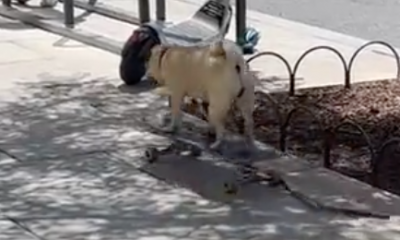

Mr. Butts the Pug Attempts to Skateboard
-
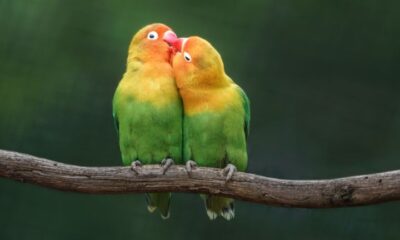

27 Animals That Mate For Life
-


30 Toughest Animals That Will Do Anything To Survive
-


25 Mythical And Misunderstood Animals
-
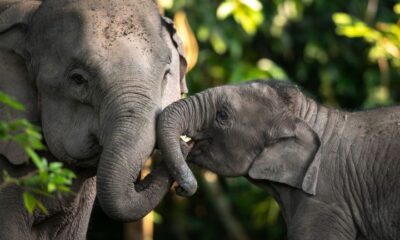

25 Fascinating Facts About Elephants
-


We Promise This Animal Is Not As Annoying As You…
-


30 Rarest Animal From Around The World
-


Cuddly koala pounces on plan to boost international breeding program
-


Baby otter hugs and snuggles mom
-


Boris the bear beating the heat at the Milwaukee County…
-


I’ve got some gorilla duct tape if you want it.…
-


28 Animals That Use Camouflage For Protection
